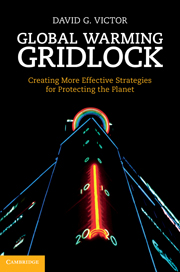Book contents
- Frontmatter
- Contents
- List of figures
- List of tables
- Preface and acknowledgements: a journey studying international environmental regulation
- Hard truths about global warming: a roadmap to reading this book
- Part I Setting the scene
- 1 Introduction and overview
- 2 Why global warming is such a hard problem to solve
- Part II The three dimensions of climate policy strategy
- Part III Putting it all together
- Notes
- References
- Index
2 - Why global warming is such a hard problem to solve
from Part I - Setting the scene
Published online by Cambridge University Press: 05 June 2012
- Frontmatter
- Contents
- List of figures
- List of tables
- Preface and acknowledgements: a journey studying international environmental regulation
- Hard truths about global warming: a roadmap to reading this book
- Part I Setting the scene
- 1 Introduction and overview
- 2 Why global warming is such a hard problem to solve
- Part II The three dimensions of climate policy strategy
- Part III Putting it all together
- Notes
- References
- Index
Summary
Most books on global warming policy start with a chapter on the science. Because that's been done so many times before, I will do something different. I start with a brief history of the science.
Scientifically, much of what was needed to start worrying about global warming was known in the late 1950s. Yet no society really became concerned until much later in the 1980s. The shift reflects a change in mindset about whether human activities could have adverse global consequences.
Although this book is about global warming, serious efforts to solve that problem really began with a different atmospheric problem: the ozone layer. From the early 1970s industrial societies worried – at first about supersonic airplanes and then spray cans – that they were thinning the life-protecting ozone layer. Ozone concerns changed the mindset and made it easier to spot and manage other global problems, including global warming. Unfortunately, the ozone experience also created a model for how to regulate global problems that worked well for ozone but is a terrible way to handle more complex and expensive problems like global warming. The wrongheadedness of that model is a topic for later in Chapter 7.
In reviewing the basic science of climate warming I boil it down to three central facts that matter for policy. At the top of that list is the fact that carbon dioxide (CO2), the chief human cause of warming, has a very long atmospheric lifetime.
Information
- Type
- Chapter
- Information
- Global Warming GridlockCreating More Effective Strategies for Protecting the Planet, pp. 30 - 58Publisher: Cambridge University PressPrint publication year: 2011
